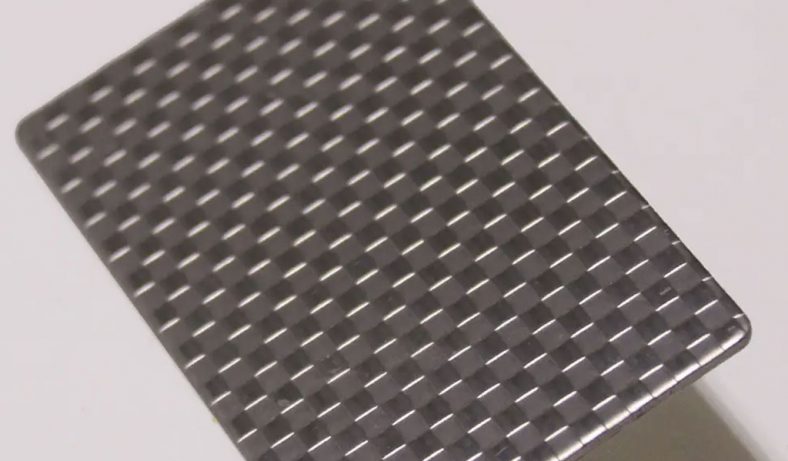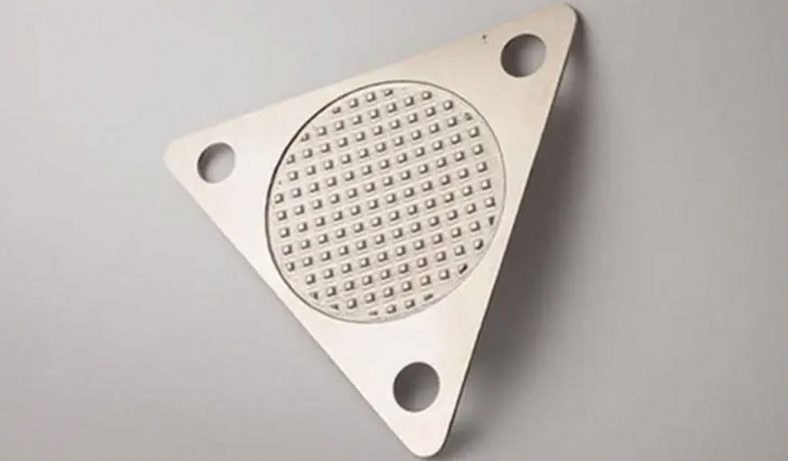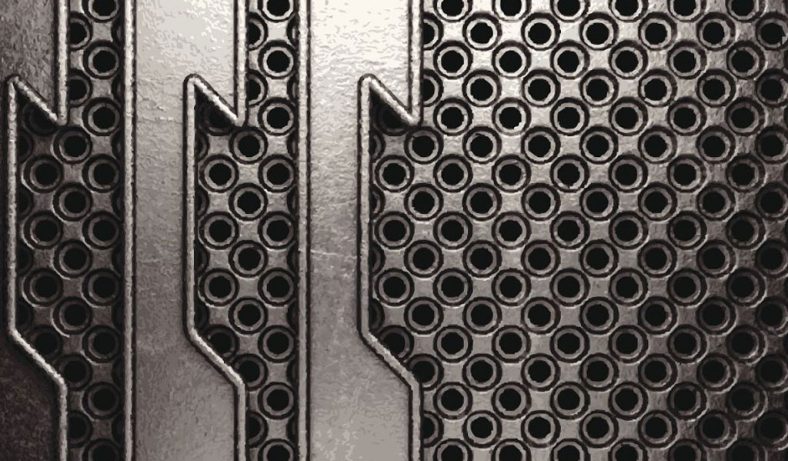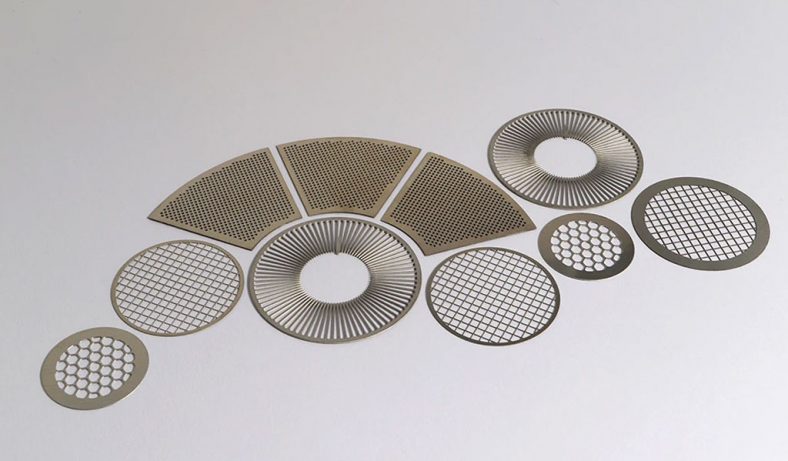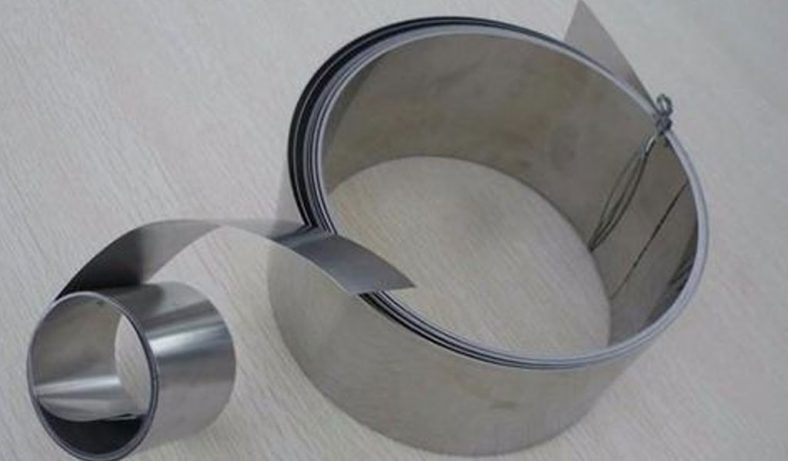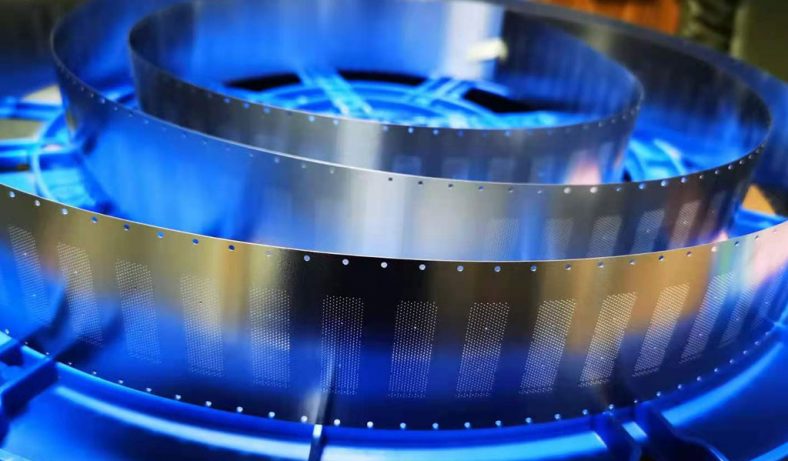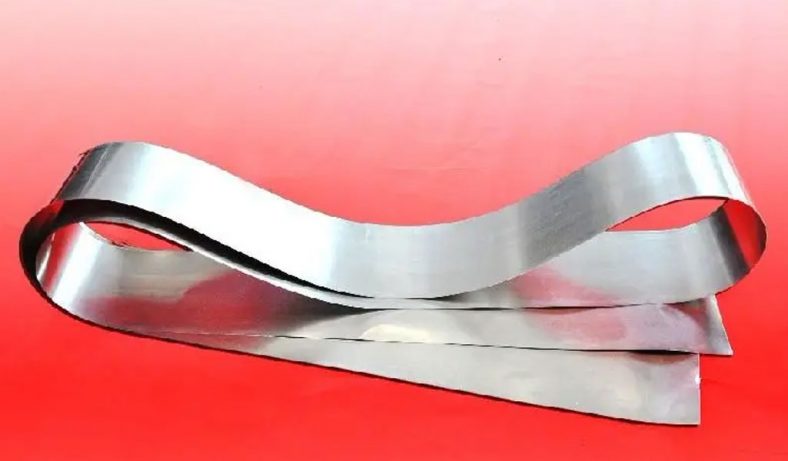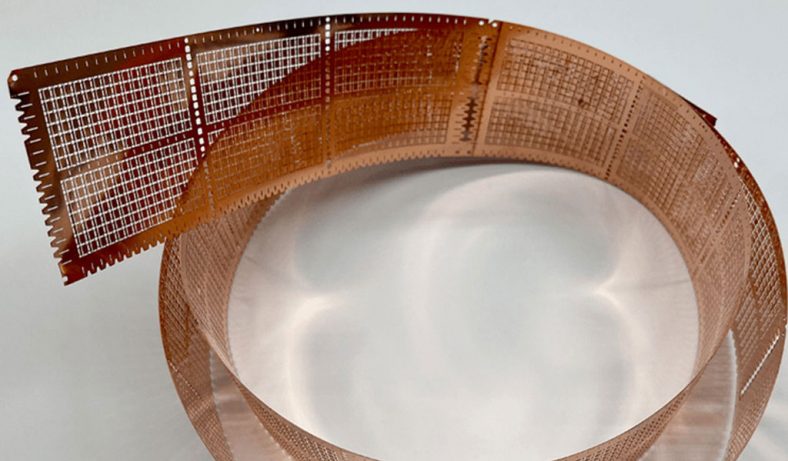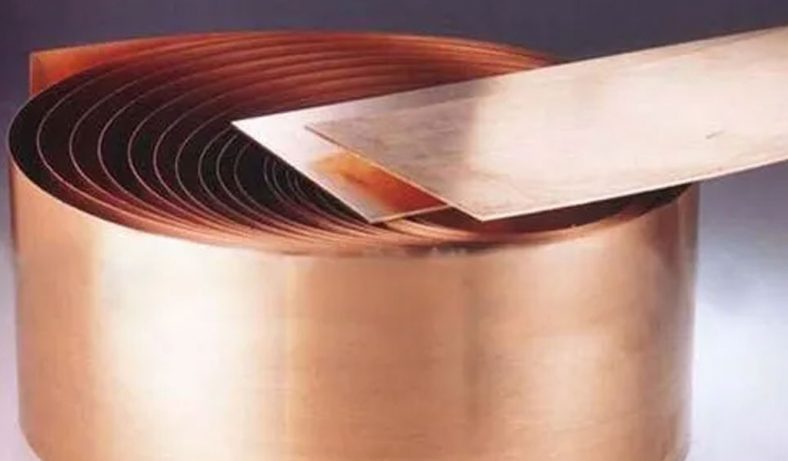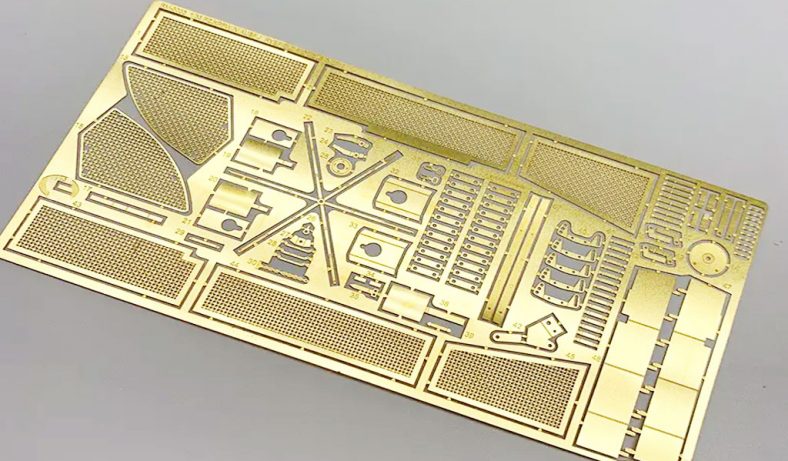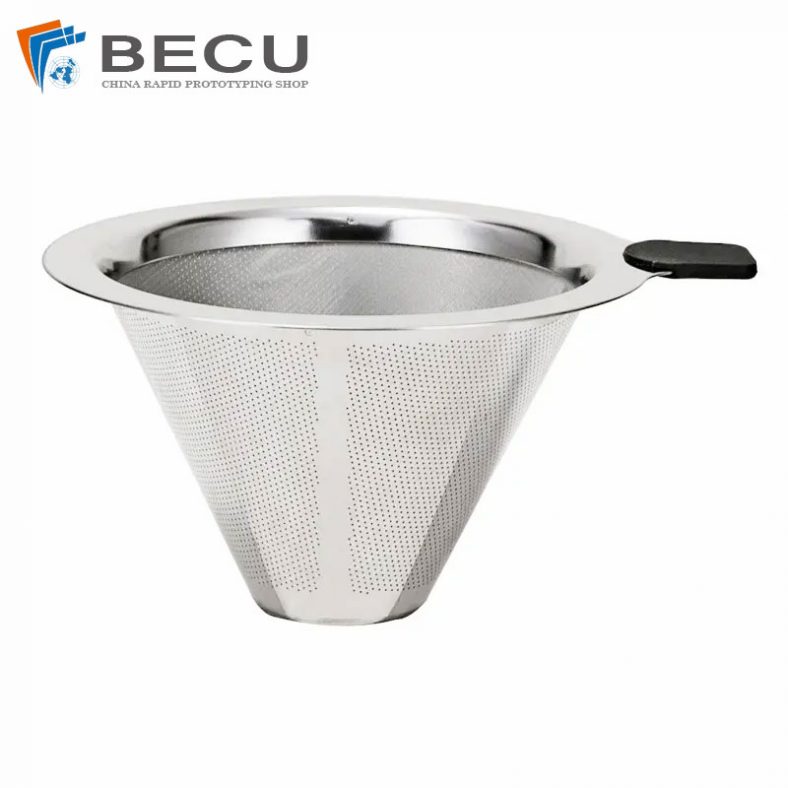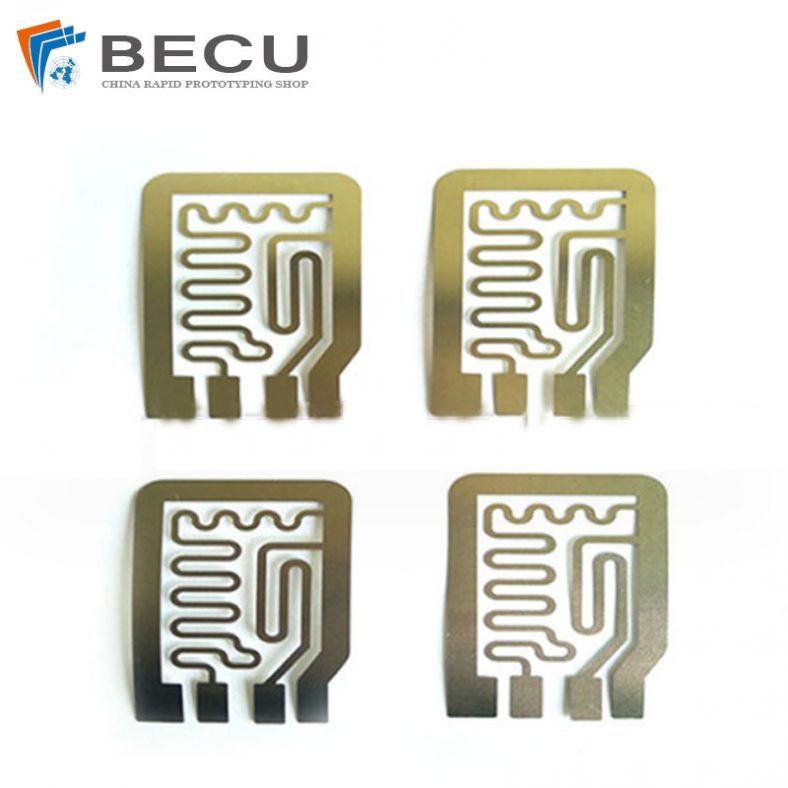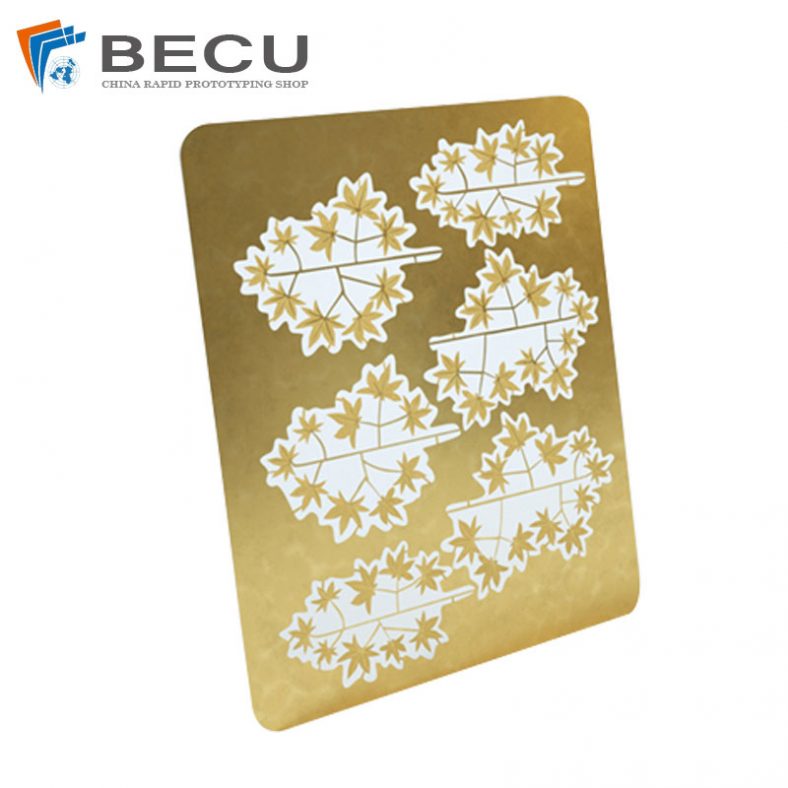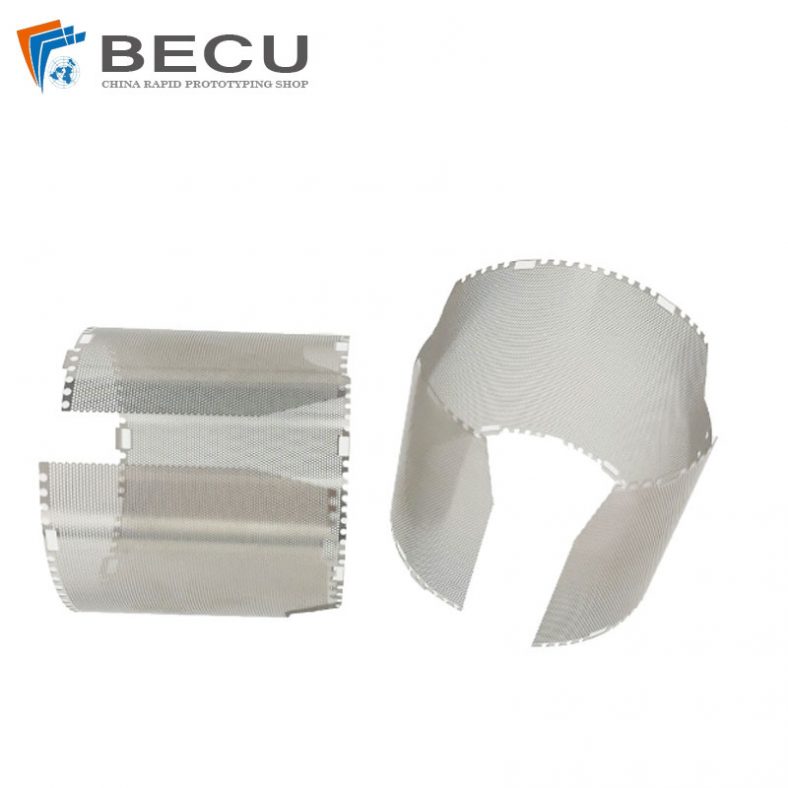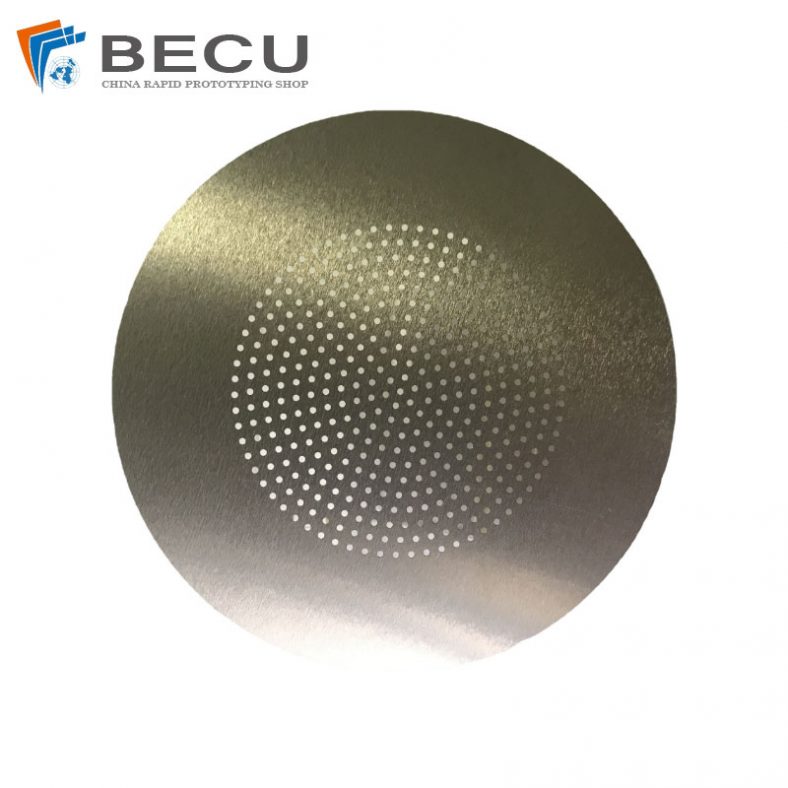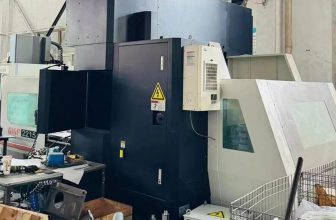Metal etching is a critical process in various industrial applications, including semiconductor manufacturing, microelectromechanical systems (MEMS) fabrication, and the production of intricate metallic components for aerospace and automotive industries. The etching process involves the selective removal of material from a metal surface using chemical or physical means, typically through the application of etchants—chemical solutions or gases that react with the metal to form soluble or volatile products. The etching rate, defined as the rate at which material is removed from the metal surface (often measured in micrometers per minute or angstroms per second), is influenced by numerous factors, including the composition of the etchant, the type of metal, and environmental conditions such as temperature.
Temperature plays a pivotal role in determining the kinetics of etching processes. High-temperature environments, in particular, can significantly alter the etching rate by affecting the chemical reaction rates, diffusion processes, and physical properties of both the etchant and the metal substrate. Understanding the effect of high temperatures on etching rates is essential for optimizing process parameters, ensuring precision in material removal, and minimizing undesirable side effects such as over-etching or surface degradation. This article provides a comprehensive examination of the impact of high-temperature environments on etching rates in metal etching, covering the underlying mechanisms, experimental observations, and practical implications. The discussion is supported by detailed tables comparing etching rates under varying temperature conditions for different metals and etchants.
Fundamentals of Metal Etching
Metal etching can be broadly classified into two categories: wet etching and dry etching. Wet etching involves the use of liquid chemical solutions to dissolve the metal, while dry etching employs gaseous etchants, often in a plasma state, to remove material through chemical reactions or physical sputtering. Both methods are sensitive to environmental conditions, with temperature being a critical parameter that influences the etching rate and the quality of the etched surface.
In wet etching, the metal is immersed in or exposed to an etchant solution, which reacts with the metal surface to form soluble compounds that are subsequently removed. Common wet etchants include acids (e.g., hydrochloric acid, nitric acid), bases (e.g., potassium hydroxide), and salt solutions (e.g., ferric chloride). The etching rate in wet etching is governed by the reaction kinetics at the metal-etchant interface, which are strongly temperature-dependent due to the Arrhenius relationship governing chemical reaction rates.
Dry etching, often performed in a vacuum chamber, uses reactive gases or plasmas to etch the metal. Techniques such as reactive ion etching (RIE) and plasma-enhanced etching rely on a combination of chemical reactions and ion bombardment to achieve material removal. The etching rate in dry etching is influenced by the plasma temperature, gas composition, and substrate temperature, all of which interact in complex ways to determine the overall process efficiency.
Role of Temperature in Etching Kinetics
Temperature affects etching rates primarily through its influence on the chemical and physical processes involved in material removal. The Arrhenius equation provides a fundamental framework for understanding the temperature dependence of reaction rates:
[ k = A e^{-\frac{E_a}{RT}} ]
where:
- ( k ) is the reaction rate constant,
- ( A ) is the pre-exponential factor,
- ( E_a ) is the activation energy,
- ( R ) is the gas constant,
- ( T ) is the absolute temperature (in Kelvin).
As temperature increases, the exponential term ( e^{-\frac{E_a}{RT}} ) increases, leading to a higher reaction rate constant and, consequently, a faster etching rate. However, the relationship between temperature and etching rate is not always linear, as other factors—such as mass transport limitations, etchant depletion, and surface passivation—can introduce complexities.
In wet etching, higher temperatures enhance the diffusion of etchant molecules to the metal surface and the removal of reaction products, further accelerating the etching process. In dry etching, elevated temperatures can increase the volatility of reaction products, facilitating their removal from the surface, but excessively high temperatures may lead to undesirable effects such as thermal damage to the substrate or changes in plasma characteristics.
Types of Metals and Etchants
The effect of temperature on etching rate varies depending on the metal being etched and the etchant used. Common metals in etching processes include aluminum, copper, titanium, and stainless steel, each of which exhibits unique chemical and physical properties that influence its etching behavior. Table 1 provides a summary of typical metals and their corresponding etchants, along with the expected temperature dependence of the etching rate.
Table 1: Common Metals and Etchants in Metal Etching
| Metal | Common Etchants | Temperature Dependence | Typical Etching Rate (µm/min) at 25°C |
|---|---|---|---|
| Aluminum | H3PO4 + HNO3 + CH3COOH, NaOH | Strong (exponential increase) | 0.5–2.0 |
| Copper | FeCl3, HNO3, NH4OH + H2O2 | Moderate to strong | 1.0–5.0 |
| Titanium | HF + HNO3, KOH + H2O2 | Moderate | 0.1–1.0 |
| Stainless Steel | FeCl3, HNO3 + HCl | Weak to moderate | 0.2–1.5 |
Note: Etching rates are approximate and depend on etchant concentration, agitation, and other process parameters.
Mechanisms of Temperature Effects on Etching Rate
Chemical Reaction Kinetics
The primary mechanism by which temperature affects etching rate is through its influence on the chemical reaction kinetics at the metal-etchant interface. Most etching reactions are thermally activated, meaning that the energy barrier (activation energy) for the reaction must be overcome for material removal to occur. As temperature increases, more molecules possess the energy required to surpass this barrier, leading to an increased reaction rate.
For example, in the wet etching of aluminum using a phosphoric acid-based etchant, the reaction can be represented as:
[ Al + H3PO4 \rightarrow AlPO4 + H2 ]
The rate of this reaction increases with temperature due to the enhanced dissociation of phosphoric acid and the increased mobility of aluminum ions at the surface. Experimental studies have shown that the etching rate of aluminum in phosphoric acid-based solutions can double for every 10°C increase in temperature within the range of 20–60°C.
Diffusion and Mass Transport
In addition to reaction kinetics, temperature affects the diffusion of etchant molecules to the metal surface and the removal of reaction products. In wet etching, the etching rate is often limited by the diffusion of fresh etchant to the surface or the removal of soluble reaction products. Higher temperatures reduce the viscosity of the etchant solution and increase the diffusion coefficient, as described by the Stokes-Einstein equation:
[ D = \frac{k_B T}{6 \pi \eta r} ]
where:
- ( D ) is the diffusion coefficient,
- ( k_B ) is the Boltzmann constant,
- ( T ) is the absolute temperature,
- ( \eta ) is the viscosity of the solution,
- ( r ) is the radius of the diffusing species.
As temperature increases, the diffusion coefficient rises, leading to faster mass transport and a higher etching rate. This effect is particularly pronounced in wet etching processes where diffusion is the rate-limiting step.
In dry etching, temperature influences the transport of reactive species in the plasma and the desorption of volatile reaction products from the surface. For instance, in the plasma etching of copper using chlorine-based gases, the formation of volatile copper chloride (CuCl) is enhanced at higher temperatures, increasing the etching rate.
Surface Effects and Passivation
High temperatures can also alter the surface properties of the metal, affecting the etching rate. In some cases, elevated temperatures promote the formation of passivation layers—thin oxide or nitride films that protect the metal surface from further etching. For example, in the etching of titanium using hydrofluoric acid (HF), high temperatures can accelerate the formation of a titanium dioxide (TiO2) layer, which slows the etching rate by acting as a barrier to etchant penetration.
Conversely, in other systems, high temperatures may prevent passivation by increasing the solubility or volatility of reaction products, thereby maintaining a high etching rate. The balance between passivation and etching is highly dependent on the metal, etchant, and temperature, making it a critical consideration in process design.
Phase Changes and Etchant Stability
At high temperatures, the physical state of the etchant or metal may change, affecting the etching process. For example, in wet etching, excessively high temperatures may cause the etchant solution to evaporate or decompose, reducing its effectiveness. In dry etching, high temperatures can alter the plasma characteristics, such as ion density and energy distribution, which in turn affect the etching rate.
The stability of the etchant is another important factor. Some etchants, such as hydrogen peroxide-based solutions, decompose rapidly at elevated temperatures, leading to a decrease in etching efficiency. Careful selection of etchants and control of temperature are therefore essential to maintain consistent etching performance.
Experimental Observations
Wet Etching Studies
Numerous experimental studies have investigated the effect of temperature on etching rates in wet etching processes. For example, a study on the wet etching of copper using ferric chloride (FeCl3) found that the etching rate increased from 1.2 µm/min at 25°C to 3.8 µm/min at 50°C, following an Arrhenius-type behavior. The activation energy for this process was calculated to be approximately 40 kJ/mol, indicating a strong temperature dependence.
Similarly, in the etching of aluminum using a mixture of phosphoric acid, nitric acid, and acetic acid, researchers observed that the etching rate increased exponentially with temperature, with a doubling of the rate for every 10°C increase in the range of 20–60°C. However, at temperatures above 60°C, the etching rate plateaued due to etchant depletion and increased surface passivation.
Table 2: Effect of Temperature on Etching Rate in Wet Etching
| Metal | Etchant | Temperature (°C) | Etching Rate (µm/min) | Activation Energy (kJ/mol) |
|---|---|---|---|---|
| Copper | FeCl3 (40% w/v) | 25 | 1.2 | 40 |
| Copper | FeCl3 (40% w/v) | 50 | 3.8 | 40 |
| Aluminum | H3PO4 + HNO3 + CH3COOH (80:5:5) | 20 | 0.5 | 50 |
| Aluminum | H3PO4 + HNO3 + CH3COOH (80:5:5) | 60 | 2.0 | 50 |
| Titanium | HF + HNO3 (1:3) | 25 | 0.3 | 30 |
| Titanium | HF + HNO3 (1:3) | 50 | 0.8 | 30 |
Dry Etching Studies
In dry etching, the effect of temperature is often more complex due to the interplay between plasma characteristics and substrate temperature. A study on the plasma etching of titanium using a chlorine-based plasma found that the etching rate increased from 0.1 µm/min at 25°C to 0.4 µm/min at 100°C, driven by the increased volatility of titanium chloride (TiCl4) at higher temperatures. However, at temperatures above 150°C, the etching rate decreased due to thermal damage to the substrate and changes in plasma chemistry.
In the case of aluminum etching using a BCl3/Cl2 plasma, researchers observed a linear increase in etching rate with temperature up to 80°C, followed by a decline due to the formation of a non-volatile aluminum chloride layer. These findings highlight the importance of optimizing temperature to balance etching rate and surface quality.
Table 3: Effect of Temperature on Etching Rate in Dry Etching
| Metal | Etchant Gas | Temperature (°C) | Etching Rate (µm/min) | Comments |
|---|---|---|---|---|
| Titanium | Cl2/BCl3 Plasma | 25 | 0.1 | Limited by product volatility |
| Titanium | Cl2/BCl3 Plasma | 100 | 0.4 | Enhanced volatility of TiCl4 |
| Aluminum | BCl3/Cl2 Plasma | 25 | 0.2 | Linear increase up to 80°C |
| Aluminum | BCl3/Cl2 Plasma | 80 | 0.6 | Passivation above 80°C |
| Copper | Cl2/Ar Plasma | 50 | 0.3 | Stable etching up to 100°C |
| Copper | Cl2/Ar Plasma | 100 | 0.5 | Risk of surface roughness |
Comparative Analysis
Comparing wet and dry etching, wet etching generally exhibits a stronger temperature dependence due to the direct influence of temperature on liquid-phase reaction kinetics and diffusion. Dry etching, while also temperature-sensitive, is often limited by plasma characteristics and ion bombardment, which introduce additional variables that can mask the effect of temperature. Table 4 provides a comparative overview of temperature effects in wet and dry etching for selected metals.
Table 4: Comparison of Temperature Effects in Wet and Dry Etching
| Metal | Etching Method | Etchant | Temperature Range (°C) | Etching Rate Increase (% per 10°C) | Key Limiting Factor |
|---|---|---|---|---|---|
| Aluminum | Wet | H3PO4 + HNO3 + CH3COOH | 20–60 | 100–150 | Etchant depletion |
| Aluminum | Dry | BCl3/Cl2 Plasma | 25–80 | 50–75 | Passivation layer formation |
| Copper | Wet | FeCl3 | 25–50 | 80–120 | Diffusion-limited |
| Copper | Dry | Cl2/Ar Plasma | 50–100 | 30–50 | Plasma chemistry |
| Titanium | Wet | HF + HNO3 | 25–50 | 60–80 | Surface passivation |
| Titanium | Dry | Cl2/BCl3 Plasma | 25–100 | 40–60 | Product volatility |
Practical Implications
Process Optimization
The strong dependence of etching rate on temperature necessitates careful process optimization to achieve desired outcomes. In semiconductor manufacturing, for example, precise control of etching rate is critical to ensure the accuracy of feature sizes in integrated circuits. High temperatures may be used to increase throughput by accelerating etching, but this must be balanced against potential issues such as non-uniform etching, surface roughness, or damage to underlying layers.
In wet etching, temperature control is typically achieved using heated baths or immersion heaters, with precise monitoring to maintain consistency. In dry etching, substrate temperature is controlled using cooled or heated chucks, and plasma temperature is managed through adjustments to power and gas flow. Advanced process control systems, including real-time temperature monitoring and feedback loops, are often employed to maintain optimal conditions.
Material Selection
The choice of metal and etchant must account for the operating temperature range. For instance, titanium etching at high temperatures may require etchants that minimize passivation, such as HF-based solutions, while aluminum etching may benefit from lower temperatures to prevent excessive reaction rates and ensure uniformity. The data in Tables 1–4 can guide material and etchant selection based on the desired etching rate and temperature constraints.
Safety and Environmental Considerations
High-temperature etching processes introduce safety and environmental challenges. In wet etching, elevated temperatures increase the risk of etchant evaporation, releasing hazardous fumes that require proper ventilation and containment. In dry etching, high temperatures can increase the risk of equipment overheating or plasma instability, necessitating robust cooling systems and safety protocols.
From an environmental perspective, high-temperature processes may increase energy consumption, contributing to the carbon footprint of manufacturing operations. Additionally, the disposal of spent etchants and reaction byproducts must be managed carefully to comply with environmental regulations. Advances in green chemistry, such as the development of recyclable etchants and low-temperature processes, are helping to mitigate these concerns.
Challenges and Limitations
Non-Uniform Etching
One of the primary challenges associated with high-temperature etching is non-uniform material removal. In wet etching, temperature gradients across the metal surface can lead to variations in etching rate, resulting in uneven feature sizes or surface roughness. In dry etching, non-uniform plasma distribution or substrate heating can cause similar issues. Techniques such as agitation in wet etching and uniform plasma generation in dry etching are used to mitigate these effects, but they remain a significant challenge at high temperatures.
Thermal Damage
High temperatures can cause thermal damage to the metal substrate or underlying layers, particularly in dry etching processes where ion bombardment is involved. For example, in the etching of thin aluminum films, excessive substrate temperatures can lead to grain growth or recrystallization, altering the mechanical and electrical properties of the film. Careful control of temperature and etching time is required to prevent such damage.
Etchant Degradation
As noted earlier, high temperatures can cause etchants to decompose or evaporate, reducing their effectiveness and necessitating frequent replenishment. This is particularly problematic in wet etching, where etchant stability is critical to maintaining consistent etching rates. In dry etching, high temperatures can alter the composition of the plasma, leading to unpredictable etching behavior.
Cost Considerations
High-temperature etching processes often require specialized equipment, such as heated baths, cooled chucks, or high-power plasma systems, which increase capital and operational costs. Additionally, the energy required to maintain elevated temperatures can be significant, particularly in large-scale manufacturing operations. Balancing the benefits of faster etching rates against these costs is a key consideration in process design.
Advanced Techniques and Innovations
Temperature-Controlled Etching Systems
Recent advances in etching technology have focused on improving temperature control to optimize etching rates while minimizing undesirable effects. For example, in wet etching, automated temperature control systems with real-time monitoring and feedback have been developed to maintain precise temperature profiles across large substrates. In dry etching, advanced plasma reactors with independent control of substrate and plasma temperatures allow for greater flexibility in process optimization.
Alternative Etching Methods
To address the limitations of high-temperature etching, researchers are exploring alternative methods that reduce the reliance on elevated temperatures. For instance, photochemical etching, which uses light to enhance reaction rates, can achieve high etching rates at lower temperatures, reducing energy consumption and thermal damage. Similarly, atomic layer etching (ALE), a highly controlled dry etching technique, enables precise material removal with minimal temperature dependence, making it suitable for advanced semiconductor applications.
Machine Learning and Process Modeling
The complexity of temperature effects on etching rates has led to the application of machine learning and process modeling to optimize etching processes. Machine learning algorithms can analyze large datasets from etching experiments to identify optimal temperature profiles and predict etching rates under varying conditions. Process models, based on computational fluid dynamics or reaction kinetics, provide insights into the interplay between temperature, etchant composition, and etching rate, enabling more efficient process design.
Case Studies
Semiconductor Manufacturing
In the semiconductor industry, high-temperature etching is widely used to pattern metal layers in integrated circuits. For example, the etching of aluminum interconnects using a BCl3/Cl2 plasma is typically performed at temperatures between 50–80°C to achieve high etching rates while maintaining anisotropy. Studies have shown that precise temperature control is critical to achieving uniform feature sizes and minimizing defects such as undercutting or sidewall roughness.
Aerospace Component Fabrication
In the aerospace industry, high-temperature wet etching is used to fabricate lightweight titanium components with intricate geometries. The etching of titanium using HF-based solutions at temperatures of 40–50°C allows for rapid material removal, but careful control is required to prevent excessive passivation and ensure dimensional accuracy. The data in Table 2 can guide process optimization for such applications.
MEMS Fabrication
In MEMS fabrication, high-temperature dry etching is used to create microstructures in metals such as copper and stainless steel. For instance, the plasma etching of copper using a Cl2/Ar plasma at 100°C enables the formation of high-aspect-ratio features, but excessive temperatures can lead to surface roughness and reduced device performance. Advanced temperature control systems and process modeling are increasingly being used to address these challenges.
Future Directions
The effect of high-temperature environments on etching rates remains an active area of research, with several promising directions for future development. These include:
- Development of Temperature-Stable Etchants: Researchers are exploring new etchant formulations that maintain stability and effectiveness at high temperatures, reducing the need for frequent replenishment and minimizing environmental impact.
- Integration of Advanced Sensors: The use of in-situ sensors for real-time monitoring of temperature, etchant composition, and etching rate is expected to improve process control and enable adaptive etching strategies.
- Low-Temperature Etching Techniques: Advances in low-temperature etching methods, such as photochemical etching and ALE, may reduce the reliance on high temperatures, offering energy savings and improved compatibility with temperature-sensitive substrates.
- Sustainability and Green Chemistry: The development of environmentally friendly etchants and energy-efficient etching processes is a priority, particularly in response to growing concerns about the environmental impact of manufacturing operations.
Conclusion
The effect of high-temperature environments on etching rates in metal etching is a complex and multifaceted phenomenon, governed by the interplay of chemical reaction kinetics, diffusion, surface effects, and etchant stability. High temperatures generally increase etching rates by enhancing reaction rates and mass transport, but they also introduce challenges such as non-uniform etching, thermal damage, and etchant degradation. Experimental studies and comparative analyses, as summarized in Tables 1–4, provide valuable insights into the temperature dependence of etching rates for different metals and etchants, guiding process optimization and material selection.
Practical implications of high-temperature etching include the need for precise temperature control, careful selection of materials and etchants, and consideration of safety and environmental factors. Advances in temperature-controlled etching systems, alternative etching methods, and machine learning are helping to address the challenges associated with high-temperature etching, while case studies in semiconductor manufacturing, aerospace, and MEMS fabrication highlight the real-world applications of these principles.
As research continues, the development of temperature-stable etchants, advanced sensors, and sustainable etching processes will further enhance the efficiency and precision of metal etching, enabling new applications in advanced manufacturing and beyond. This comprehensive understanding of temperature effects on etching rates underscores the importance of continued innovation in this critical field.

